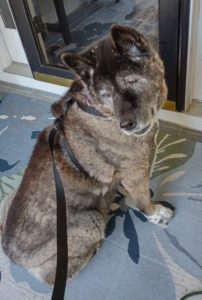
Personally, I feel a dog’s collar should be his “necklace,” the band to which his ID is attached, not an end of the leash! Seeing people, even inadvertently, pulling on their best pal’s neck hurts me to the core, but is much worse for the dog. When walking your dog, my best pearl of wisdom is to have the leash attached to a properly fitting harness. Do note the words “properly fitting.” You must adjust according to your dog’s girth and make sure it is on secure, not too tight and not too loose. Some store bought harnesses can be a challenge to move the straps through the buckles to fit, but once sized, they just need a quick check each time they go on to make sure they have not loosened or tightened and you and your walking buddy are good to go.
Besides my improv tube sock muzzle and tote bag back-end harness, one of my fav things to teach in the PROPER HANDLING & RESTRAINT section of my Pet First Aid Classes is…the Figure-8 Harness! Using a slip lead to safely gain control of a pet without choking him or having him slip free is a necessity when providing emergency care. The technique is simple and is a one-size-fits-most harness…
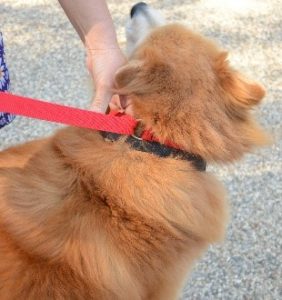
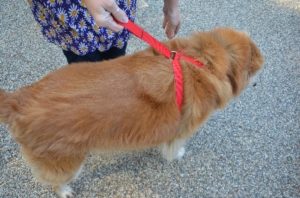
- Place the handle through the “O” or “D” ring.
- Drop loop over dog’s head and pull snug.
- Wrap leash end around chest behind both front legs, and…
- Come up from opposite side slipping handle back through “O” or “D” ring.
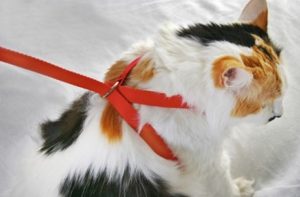
Voila! You have safely restrained a pet (dog or cat) without applying un-due pressure to the neck or vocal chords. Over the years, I have heard from a great number of pet first aid students how handy this technique has been for them and how it has allowed them to capture an elusive chihuahua or other pet in need.
My problem with slip leads however, is that if they aren’t long enough, or if someone doesn’t know the figure-8 technique, they likely place the first loop around the head and end there, risking the chance of hurting vocal chords or choking the pet. Straining on the neck can potentially increase pressure on the carotid artery and jugular vein as well as the eyes and could damage soft cartilage and cervical discs. In small breeds, such as the Yorkshire Terrier, a collapsed trachea can result, but if a pet suffers from this malady, a loop should NEVER be placed around his neck. This includes a loop used by groomers, so always aprise others of any challenges your dog has.
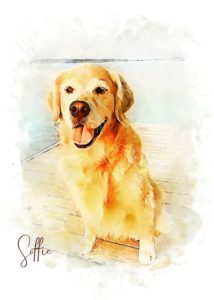
Recently, I discovered the MyOne Leash leash/collar/harness all-in-one! It’s premise is basically the same as using a slip lead but a much improved, yet simple and safe way, to gain control of your pet. Buckles allow you to place “stops” so that they leash stays in a certain configuration while “rings” allow you to either keep it as a slip lead loosening and tightening depending on the pet’s pull and resistance OR…locking it into place. Thanks to a “T” strap that you configure from the neck collar to the harness wrap, no pressure is exhibited on the dog’s neck!
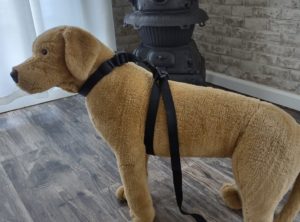
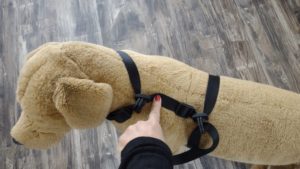
“T” strap separates the neck collar from the body harness so no strain occurs on the dog’s neck!
I had the pleasure of “zooming” with retired software developer and lifelong dog lover, Art Ingram, the creator of this product. He went to the drawing board when he realized his dog, Soffie, easily followed a vet tech back into the exam room when she placed a leash around her midsection and MyOne Leash was born!
MyOne Leash ensures a dog’s safety, security and control when walking and being handled in public, so it is certainly a great way to gain control of a pet during an emergency. This multipurpose device adjusts to any shape or size dog and it’s all one piece, it’s all you need. It can be a front clip harness or more traditional back clip. Some feel back clip harnesses can actually encourage dogs to pull as it is a dog’s natural inclination to push or pull against pressure (aka opposition reflex). Using a front clip harness causes the dog to resist that natural inclination and encourages him to walk by your side. How do we lead a horse to drink? From the front, of course 🙂
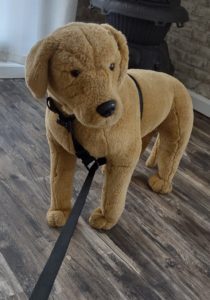
The problem I mentioned earlier, that a typical slip lead may come up short, is NOT a problem with this ingenious device! Made of extra strong, non-abrasive nylon, the version for larger dogs is 10 feet long and 1″ wide, grrrreat for even my super-sized Akita! For our smaller fur friends (under 35 lbs.) the width of the leash is reduced to a more comfortable 3/4″ wide and the length is 9 feet.
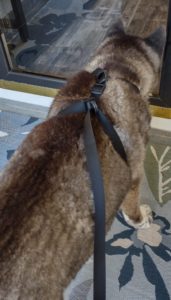
And the best news of all…








